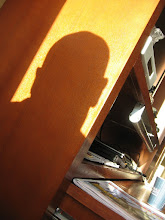
I bisqued on Friday, glazed Saturday AM & fired the glaze load Saturday PM. I had the kiln turned up for a total of about 8 hours.I tested 3 glazes. Of the 3, this one works. It's called Schweiger's Liner and it comes from Louis Katz files. I used Laguna borate and PV Clay. On this piece it was applied thick but it worked out okay. The recipe calls it a cone 4-14 reduction glaze, but here I fired it to cone 6 (fast) in an electric kiln. The milky white is just from the calcium borate and the PV clay. That is the Campbell's GT stoneware body. I have been loading recipes into HyperGlaze as of late. Cone 6 in an electric kiln requires well-fluxed glazes, and the boron glaze works well to cover the variability of temperatures both in the kiln and from firing to firing.
